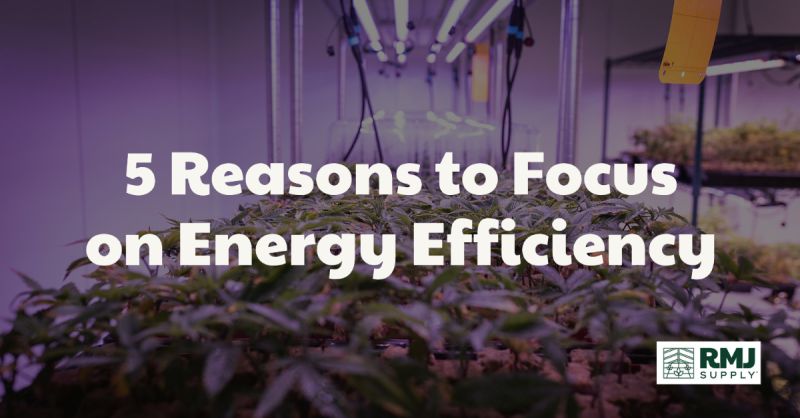Smart growers today are putting more attention than ever on building out indoor farming facilities that reduce energy consumption and use cleaner power.
Why? Simply, they are feeling more pressure than ever to cut their costs. Until recently, upgrading to more energy-efficient technology meant spending a lot of money. However, thanks to an increasing number of financial incentives and costs of clean energy technology, it has never been easier to go green.
In this piece we wrote with RMJ Supply, we lay out reasons for why growers are thinking more about energy efficiency.
LOWER OPERATING COSTS
Operating costs for many controlled environment agriculture (CEA) facilities across the world have been increasing, driven in large part by the rising costs of labor, supplies, and energy. For many growers, these rising operating expenses threaten the very viability of their businesses. For some, however, there may still be time to reconfigure their operations to cut their costs, especially with respect to their energy spend. For operators still in the design phase, focusing on energy efficiency can save many thousands of dollars in annual operating costs, and may even keep them operating in the black during times of market turbulence.
IMPROVE QUALITY & YIELDS
Studies are beginning to show that well-equipped indoor farms can be more productive on a grams per energy input basis than more basic ones. And it makes sense: using advanced technology to better control the growing environment can optimize resource use for plant growth. As a result, facilities that emphasize performance over dirt-cheap upfront costs often experience higher yields and a lower need for chemical inputs.
TAX INCENTIVES
Conventional wisdom says that investing in energy-efficient technology is much more expensive than installing less-sophisticated and poorly-designed equipment. However, many energy utilities are paradoxically motivated to help their customers reduce their energy consumption. (Curious to learn why? Visit here for an explanation).
As a result, many have created programs with budgets worth tens of millions of dollars designed precisely to subsidize their customers’ purchase and installation of energy-efficient technology, such as LED grow lights, certain standalone dehumidifiers, and advanced HVAC and controls.
Further, the Inflation Reduction Act double downs on the federal government’s commitment to incentive energy efficiency. For example, the IRS offers several tax incentives for energy-efficient buildings and renewable energy projects, including the Energy Efficient Commercial Buildings Tax Deduction and the Renewable Energy Production Tax Credit.
NEW TECHNOLOGY MAKES PLANNING AN ENERGY-EFFICIENT FACILITY SEAMLESS
Tools and resources exist that make designing an energy-efficient integrated cultivation facility easier than ever. Climate Resources Group partners with companies that use sophisticated 3D models to precisely estimate a facility’s energy needs. These models are instrumental in helping facility owners to better understand their overall energy needs while also maximizing utility energy efficiency incentives.
RENEWABLE ENERGY OPTIONS ARE MORE AFFORDABLE THAN EVER
Finally, the costs of powering a facility with clean energy has been dropping considerably. Thanks again in part to the Inflation Reduction Act, the cost of renewable energy in the United States is lower than ever. For most of the country, it has become cheaper for utilities to build a new solar or wind farm to continue to operate their coal-fired power plants. This means that many utilities or power developers are building more clean energy facilities and are looking for customers to sign up at a discount over default energy rates. Also, for those operators who wish to install solar or other clean energy technologies at their facility, the cost to do so has never been so low. The best energy source will depend on the location and specific needs of the facility.
DISCOVER HOW YOU CAN BENEFIT FROM AN ENERGY EFFICIENT OPERATION
In conclusion, designing and constructing an energy-efficient controlled environment agriculture facility can not only help you get better crop yields, but it can do so with a lower energy and environmental footprint. Furthermore, for many operators, there are financial incentives to install energy-efficient technology, from local utility grants to state and federal tax benefits.
For a deeper dive into the design and build out of a sustainable indoor grow facility, access RMJ’s white paper library and download Pursuing Sustainability.

